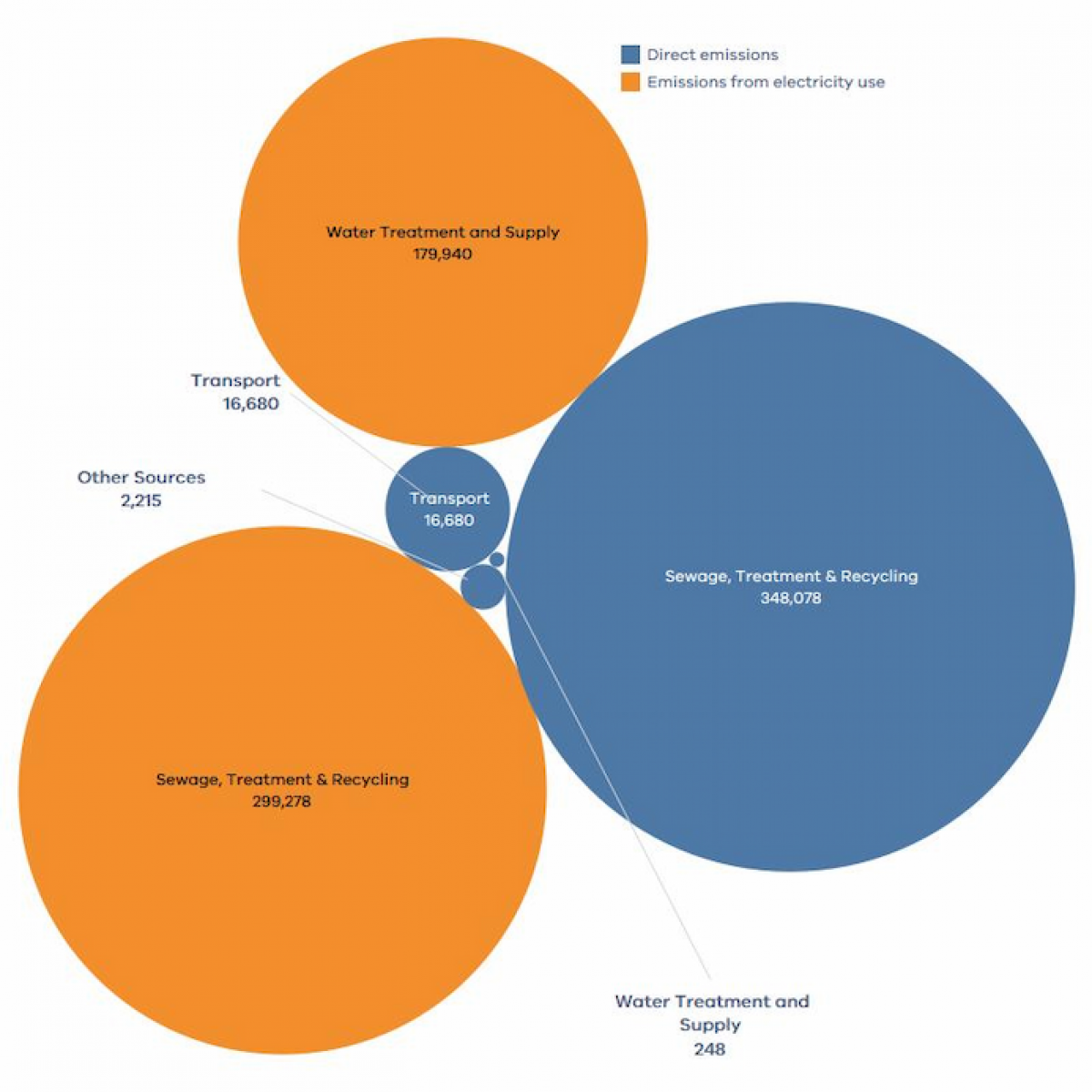On this page:
The Victorian water sector is a major source of greenhouse gas emissions. Our 18 water corporations released almost 1 million tonnes of greenhouse gases into the atmosphere in the 2019-2020 financial year.
In terms of climate impact, that volume of emissions is like having around 250,000 cars on our roads for a year.
Most of the sector’s emissions come directly from wastewater treatment. These are called scope 1 emissions.
The water sector indirectly produces emissions when electricity is used to power treatment plants and processes. These are known as scope 2 emissions.
Indirect emissions also occur when the materials needed to build and upgrade our water infrastructure are created and when households, businesses and industry use water. These indirect sources of emissions are known as scope 3 emissions.
Reducing emissions is a big challenge for the water sector.
Find out more about the innovative ways water corporations are tackling their emission reduction targets.
Direct and indirect emissions released by the Victorian water sector
The graph below shows direct and indirect emissions released by the Victorian water sector 2020-2021 financial year.

Direct emissions - scope 1
These are greenhouse gases released into the atmosphere as a direct result of a water corporation’s actions. They are usually released by on-site activities.
Examples of activities in the water sector which produce greenhouse gas emissions include:
- The treatment and cleaning of sewage and wastewater - friendly bacteria break down the organic material in the wastewater producing methane, while the removal of excess nutrients from the water can produce nitrous oxide. Both are strong greenhouse gases; and
- driving cars (which release greenhouse gases) owned by the water corporations.
Indirect emissions - scope 2
These are greenhouse gases released into the atmosphere from indirect consumption of energy.
Electricity used by water corporations has traditionally been generated by burning fossil fuels. In the 2010/21 financial year around half of the water industry’s emissions were from electricity use.
Examples of these emissions in the water sector include:
- electricity (from burning fossil fuels) used to run the machines and processes to treat and clean sewage and wastewater; and
- electricity (from burning fossil fuels) used to move water around the state to where it's needed - ensuring Victorian communities have a reliable supply of water.
Indirect emissions – scope 3
When households and businesses use water, they are also using energy. This is often to heat or cool the water for use. When that energy is generated from non-renewable sources, such as fossil fuels, this results in greenhouse gases being released into the atmosphere.
It’s likely that the total emissions generated by Victorians through their water use is much higher than the emissions generated by the water sector. You can reduce your water-related emissions at home by:
- having shorter showers
- washing your clothes with cold water
- installing a solar hot water system and more efficient showerheads or toilets
- using renewable energy to power your home or business.
Page last updated: 02/04/24
